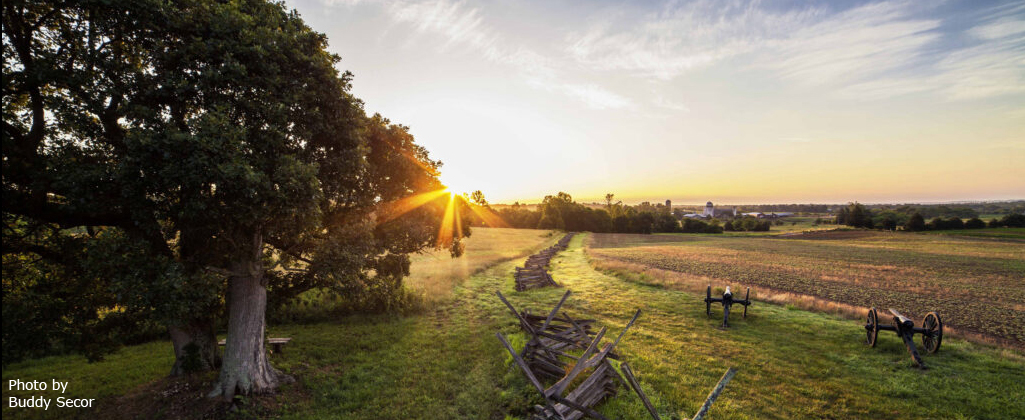Living out of your haversack doesn’t have to be a deprivation experience, nor do you need to fill it with ice or convert it into a refrigerator. Fear about food spoiling over the course of an event, is, with some easily avoided exceptions, mostly fairy tales.
Here are the broad rules for a good experience:
- No modern packaging. No tin foil, no clear wrap, no plastic. Wrap it in brown paper or cloth. Cloth sacks are invaluable in keeping the sugar out of the coffee- out of the bacon- out of the flour.
- Plan on spending time preparing your food. Right, this is not the modern expectation. We think about food and, moments later, we eat food, thanks to microwaves and ranges. Food in 1862 required preparation.
- For your first time eating from your haversack, keep it simple.
Tip #1: Most people who get sick shortly after reenacting events are suffering from food contaminated with fecal coliform. Whether it’s portapotties, a laurel bush, or lack of awareness about just how fast horse manure can get from the horse to the field to your shoe to your hand to your food, it’s contamination and it will make you sick. So the first tip is two-fold: Be aware of the danger you face, and wash your hands before you handle food. This isn’t a modern imposition. Most everyone in the 1860s grew up with the admonition that cleanliness was next to Godliness, even if some were too stupid or too tired or too far away from soap and water to implement the advice.
Tip #2: You can fry food, you can boil food, but either way, the smaller the chunks you start with, the faster the process. Faster cooking means less time spent nursing a fire and less time gathering firewood.
Tip #3: Things that you wouldn’t normally think of combining, like ham, rice, apples and onions, take on a whole new aspect in the field. The solution for that combination is to put the thing that needs the longest cooking on the fire first, then add the rest in stages. That would be rice (you have to bring it to a boil and then keep it at a simmer. Twice as much water as rice), onions (take longer than you think), ham, and apples (if you overcook apples, they disintegrate into a visually disturbing red mass of peels.)
Tip #4: Things that are first fried and then boiled impart different flavors. Fried onions added to rice and carrots yield a very different taste and texture than onions that are simply boiled.
Things you can bring:
Beginner’s menu:
Dry sausage (It’s available at most supermarkets. It’s the stuff they don’t refrigerate. That’s a clue that it won’t spoil. It will last longer than an Egyptian mummy.)
Two apples
Two small onions
Hardtack
A small sack of coffee
A small sack of sugar
A small sack of salt
This menu uses minimal water. You can cube the sausage, apples and onions, fill up your big tin cup half way, dump it in and put it on to boil. Crumple up a piece of hardtack when it’s about done and you’ve got most of the basic food groups warm and tasty.
Intermediate menu 1:
A pound of slab bacon (it will get eaten, don’t worry).
One each: onion, potato, carrot and apple.
Coffee, sugar, salt
Hardtack
Rice
You now have the option of frying the bacon in a pan or canteen half, generating grease, and breaking up hardtack and frying that in the grease also. It is surprisingly good, especially if you eat this Saturday after a day outdoors. The rice can be boiled and used in combination with any of the other ingredients.
Intermediate menu 2:
All of the above, but substitute groats for rice. Groats are shelled but not pressed or otherwise processed oats or buckwheat. It’s cereal; you cook it like rice, and it can go either as breakfast, in which case you might want to hit it with sugar, or a main meal, in which case it’s used just like rice.
Hardtack and groats can be found at various suppliers, you just need to get online.
Beyond the basics:
When you figure out this stuff isn’t going to kill you, it’s time to refine what you do. Our 19th century counterparts had access to vegetables and foods that have fallen out of favor today, things like parsnips and Jerusalem artichokes. It is also good to check what the availability of food would have been in the areas and at the times being reenacted; apples have a long storage life, but peaches as peaches have a short season. Canned or preserved peaches are a different possibility.
Researching the foods available will help you prepare your impression for the weekend, and learning these skills will not only heighten your education, but also your appreciation of the common Civil War Soldier and help you “look 1862.”
Information provided by Rear Rank Productions

